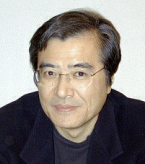March 21, 2003 – Several major Japanese companies have joined forces to back the Ubiquitous ID Center. The goal of the center is to develop technologies that will enable the widespread use of radio frequency identification and other pervasive computing technologies. It could emerge in Japan as a rival to the Auto-ID Center.
Among the center’s backers are Dai Nippon Printing, Hitachi, NEC and Toppan Printing. Ken Sakamura, a professor of information science at the University of Tokyo, runs the center, which was established in December. Sakamura the chief architect and driving force behind the Japan’s TRON Project, which has been developing a computing platform for the future since 1984.
Sakamura’s original TRON research was aimed at creating computer hardware and an operating system and programs that run on top of it. His more recent research has been focused on embedded technologies, using a small microprocessor that communicates with other objects or computers using RFID technology.
The center is not aimed at pure research, but rather will work with the companies supporting it to develop products. Sakamura has run RFID projects since the early 1990s. In one experiment, RFID tags were attached to people, paper documents and electronic IDs to electronic documents.
The Sakamura Laboratory created a system in which needed items would arrive in an office worker’s hands quickly, no matter where the person was. Office layouts were reconfigured based on patterns discerned from tracking tags, and air conditioning and lighting were also configured based on information gathered from the system.
“As an extension of that, it is necessary to attach IDs to all things involved in ubiquitous computing, not just office furniture,” Sakamura told RFID Journal. “The Ubiquitous ID Center is the base for all the elements, such as the embedded devices, smart cards, and RFID tags, that form the networks.”
Unlike the Auto-ID Center, which seeks to create a single, global numbering system, the Ubiquitous ID Center uses a meta-code format. Meta-tags stored on the RIFD chip refer to other number systems, such as the JAN Code in Japan, the Universal Product Code (UPC) in the US and the International Standard Book Number.
Just as the Auto-ID Center is developing network technologies to provide information about objects tagged with electronic product codes, Sakamura’s group is developing something called the eTRON Architecture. The system uses the entity TRON (eTRON) chip and a Ubiquitous Communicator to read the chip. The architecture offers secure communication of ID numbers and information.
Jun Murai, head of the Auto-ID Center’s lab in Japan, doesn’t see competition between the two centers. “Sakamura-san’s approach is very similar to ours,” Murai says. “If he’s successful, working with the industry, in increasing the number of uses for RFID technology, that would a very good thing in general for the information technology space. His success would benefit the Auto-ID Center and our success would benefit him.”
There are differences in the approaches, but if either group is successful, it would spur widespread adoption of RFID and thus drive down prices of equipment and software systems for all end users.
“Ultimately we would like to make the technology we are developing open and have it used throughout the world,” he says. “But we believe that is better to create things like ID assignment centers in each country or region, and we don’t necessarily think that we should partition everything at the Ubiquitous ID Center.”


